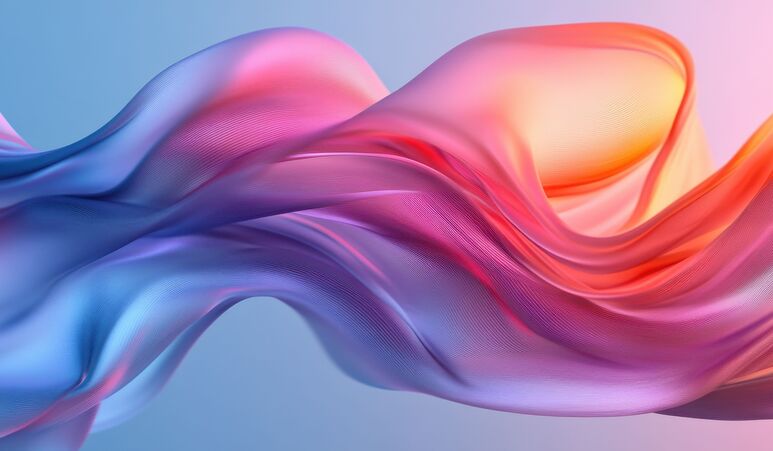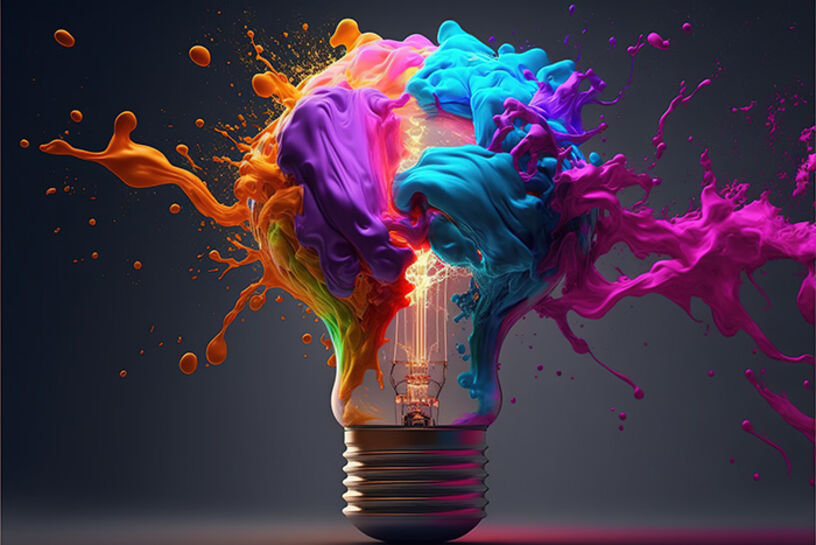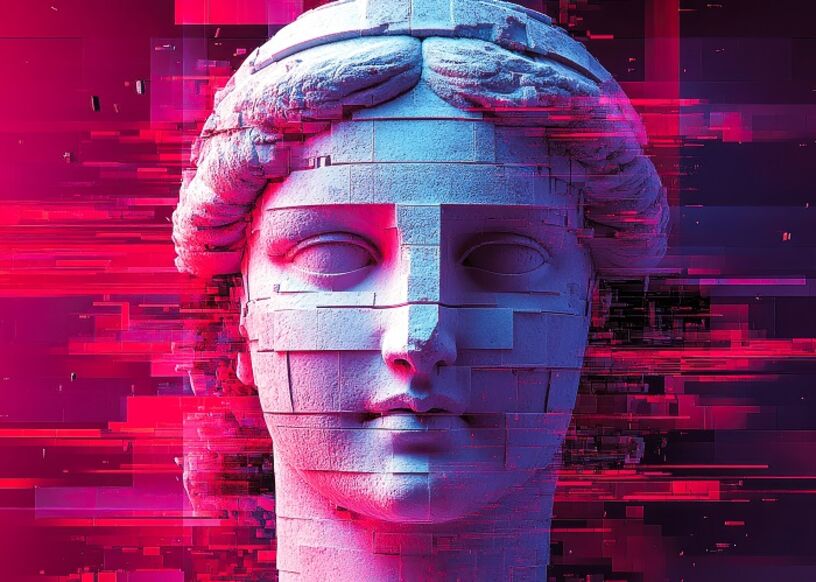The word "creativity" derives from the Latin "creare", which means "to create". The Bible already speaks of creation - people are called upon to use their skills and ideas to shape their environment and society. However, in the age of artificial intelligence and big data, many people are wondering what role humans will still play in creative endeavours. Chatbots conduct customer conversations, AI creates images and texts, and robots take over tasks on the shop floor that used to require human muscle power. Nevertheless, it is now more worthwhile than ever to think and develop creative fields such as art and design together with business.
Art Meets Business - some points of contact
The connection between business and art can be viewed in different ways. There are many interfaces and points of contact, including the following:
- Art as business: artists and creatives often have an entrepreneurial mindset to successfully market their work. Many use social media, online platforms and galleries to sell their artworks. The management of art collections, exhibitions and artworks can also be a lucrative business area.
- Art in business: Many companies invest in art to strengthen their brand identity or to make the workplace more appealing. Artwork in offices and public spaces can reflect a company's image, promote creativity and increase employee satisfaction.
- Art sponsorship and investment: In the art world, there are also business models aimed at investing in artworks. Art is also increasingly seen as a financial investment, with collectors and investors seeking to make a return on artworks. There are also art funds and auction houses that facilitate this type of business.
- Creativity in business: Many companies recognise the value of creative thought processes and rely on artistic methods for problem solving, product development or branding. Creativity is a key to success in many industries.
- Art marketing and management: The art industry itself has its own business models, e.g. in relation to art galleries, exhibition organisations and the management of artists' careers. This requires an understanding of the art as well as the economic and financial aspects.
Metaverse as a creative space
The Metaverse stands for a virtual space in which people can interact, play, work and be creative. It is an immersive digital world that enables and promotes different forms of creativity in new ways. Artists can create completely new types of artwork in the Metaverse. They can create virtual installations, 3D art, interactive art or even digital sculptures that only exist in virtual worlds. These artworks are often more accessible to a global audience and can be experienced in innovative ways by utilising new technologies such as augmented reality (AR) or virtual reality (VR). Users can not only passively consume, but actively immerse themselves in the art or design and help shape their own experience. This enables completely new forms of storytelling and creative expression that would not be possible in traditional media. In addition, creatives from all over the world can come together in the Metaverse to work and create together. This can be done through virtual studios, collaborative art projects or by sharing ideas in real time. The exchange across borders promotes the diversity of creative concepts and solutions. This applies to business problems as well as other societal and social challenges.
Gaming and avatars
Gaming as the basis of the metaverse continues to play a central role as a link between the creative scene and the industry. Digital twins in the industry also involve avatars - communicating digital images of people with different characteristics, personality traits and physical characteristics. Brands, designers and artists can also create fashion collections for avatars that people wear in their digital lives, opening up a whole new area of the fashion industry. The topic of non-fungible tokens (NFTs) is also central. NFTs have a close connection to the metaverse, as they offer the opportunity to buy and sell digital art and other creative products in the virtual world. This is changing the way art is created, owned and traded. Last but not least, game development itself is being driven forward. Game developers are creative architects of virtual worlds in which users can not only play, but also create their own content. This creates a new dimension of creativity, blurring the boundaries between games and art.
Culture clash - cultural hurdles in cooperation and synergy utilisation
Collaboration between creative professionals/artists and business experts often brings with it some specific challenges, as the two groups have different ways of thinking, working methods and objectives. This observation is certainly based on a simplification and generalisation that doesn't want to categorise people in one way or another. Nevertheless, certain patterns and potential sources of conflict can be identified:
- Different values and priorities: artists often place great value on creative freedom, authenticity and artistic expression. They are motivated by a vision, an idea or the creation of something unique and meaningful. Business experts, on the other hand, have to look at profit, profitability and the realisation of business goals. They need to ensure that a project is commercially successful and competitive in the marketplace. These different priorities can lead to tensions when artistic freedom is perceived as less important than business goals or vice versa. Artists may feel that their vision is being compromised in favour of financial considerations, while business professionals may feel that the artistic approach is not viable or profitable.
- Different working methods - The artistic way of working is often non-linear and highly experimental. The creative process can be perceived as "chaotic" as artists try out new ideas and solutions that evolve over time. Business professionals, on the other hand, favour structured processes, timelines and clear, measurable outcomes. They need to ensure that work is completed within a defined timeframe and budget. Artists may feel constrained if they are pushed into a set timeframe or budget, while business professionals may feel frustrated if the creative process is unpredictable and does not show clear progress.
- Different communication and language - Artists tend to express themselves in abstract, emotional and often metaphorical terms that can be difficult for business professionals to understand. Their focus is often on the "why" and the deep meaning behind a creative decision. Business experts use a more fact-based, quantitative language, often working with KPIs (Key Performance Indicators), targets and financial results. Challenge: These different communication styles can lead to misunderstandings and a lack of mutual understanding of each other's way of working. This can lead to important information not being communicated correctly or to conflicts over objectives and expectations.
Other possible sources of conflict are derived from the aforementioned, including the relevance of commerciality versus the evaluation of idealistic values. Decision-making and the assumption of responsibility are also often open to discussion, as creative professionals often make decisions based on different criteria than business experts (e.g. aesthetics, social criticism). The issue of time management can also be prioritised differently, as creative processes require a certain openness to results and tight deadlines can jeopardise the process.
Potential and solutions
Is the symbiosis of business and creativity a happy marriage or one that brings together what does not necessarily belong together? In view of current technological developments in the areas of metaverse, AI, virtual and augmented reality (AR, AR), the answer seems clear: both worlds are increasingly utilising synergies and also recognise that they need each other. In addition, times of enormous economic and technological upheaval require creative solutions to a greater extent, whereby "creative" is of course not limited to artistic representations. This suggests that the conflicts and misunderstandings that sometimes exist between the two worlds will increasingly give way to constructive solutions. First and foremost, this requires open and clear communication in terms of expectations and needs. It also requires a certain willingness to compromise, in which rigid positions can be abandoned with the aim of creating added value for all sides. Interdisciplinary teams, more agile methods and more flexible processes also help to integrate the mindsets of the other side and drive innovation.



